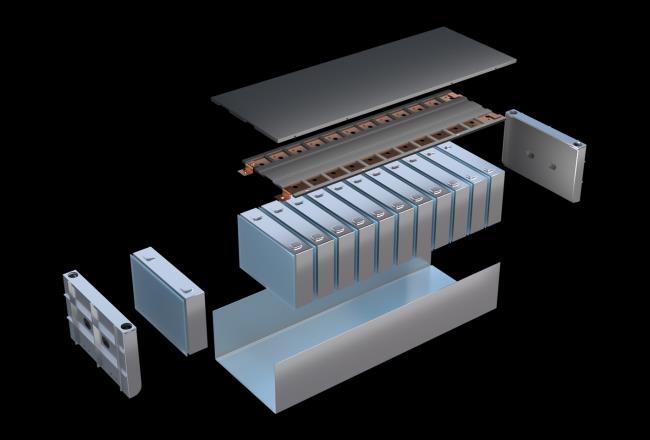
Story
Choosing the right engineering plastics for prismatic battery packs
Covestro offers a portfolio of PC+ABS materials to meet the packaging needs of prismatic cells. This portfolio includes Bayblend® FR3010 as a standard flame retardant PC+ABS. , Bayblend® FR3080 EV for thin-wall flame retardant parts, and Bayblend® FR4065 EV developed for high humidity resistance.
Flame retardancy meets reliable electrical performance
Flame retardancy is widely requested and specified by battery pack designers. Underwriters Laboratories (UL) 94 V-0 rating at nominal thickness is a commonly used metric. Electrical safety is also satisfied by electrical properties measured in volume resistivity and dielectric strength.
Covestro’s Bayblend® FR series enable packaging solutions with the right flame retardancy and electrical resistance properties. With UL 94 V-0 listings all the way down to 0.75 mm thickness and a surface resistivity of 1016 Ω, this family of materials helps to meet the safety demands from battery manufactures.
Thin-wall flame retardant Bayblend® inspires novel designs
As battery packs are trending towards larger size and higher energy density, components are expected to be thinner, more integrated, and lighter. And the demand for materials able to fulfill these needs is increasing accordingly.
The new Bayblend® FR3080 EV is exhibiting more industrial acceptance. This advanced PC+ABS alloy combines a UL 94 V-0 listing at 0.8 mm in all colors, high flow, excellent impact resistance and colorability. Compared with Bayblend® FR3010, Bayblend® FR3080 EV offers ~20% higher impact resistance (at 23°C), and thinner UL 94 V-0 certification. These material improvements enable new design possibilities.
Thermal stability supports long pack life
In the automotive industry, customers demand battery systems be guaranteed for no less than ten years. This includes not only the cells, but also packaging components. As a result, designers should choose engineering plastics with a continuous use temperature or RTI (Relative Temperature Index) that matches the temperatures a battery may see during its lifetime. Based on safety tests for lithium-ion battery systems such as thermal cycling, humidity and temperature aging an RTI of 80˚C in all three categories should be considered.
Heat and humidity play a role in evaluating long-term physical durability. Components are often evaluated in severe environments, such as the commonly used 85°C/85% RH aging for 500 to 1,000 hours. Covestro Bayblend® FR4065 EV combines resistance to high temperatures and humidity. This product enables the integrated design of busbars while withstanding high temperatures (up to 110°C) caused by rapid discharge. Thermal stability over a wide temperature range helps meet the demands of long-term durability and part-to-part consistency from battery manufactures, OEMs and consumers.
Increased end-user demands are the original source of material specifications. Covestro’s series of Bayblend® PC+ABS alloys meets the industrial trends for large, integrated and durable battery packs, tailored for prismatic cell packaging.
Key Benefits
- Safety and Environmental friendly: Bayblend® FR series don’t intentionally contain Cl and/or Br flame retardances.
- Reliable quality: Bayblend® FR seriesexhibit excellent dimensional stability and ductility.
- Long life time: Bayblend® FR series assist longer pack life with excellent aging performance.







